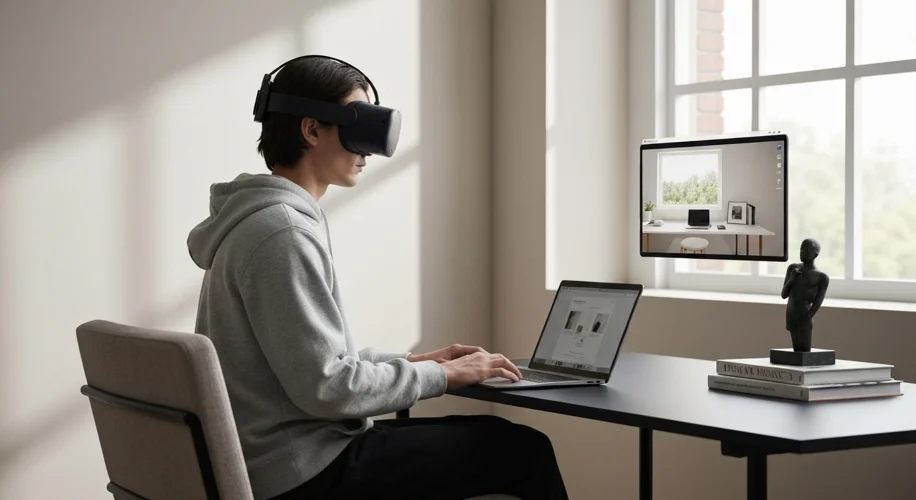Okay, so hear me out… we’re all trying to boost our productivity, right? Especially those of us who spend hours staring at code or drowning in spreadsheets. I’ve been playing around with the idea of a Head-Mounted Display (HMD) but NOT for VR or AR shenanigans. I’m talking about a simple, screen-in-front-of-your-face setup, solely for work.
Think of it like having a massive, floating monitor that you can place anywhere in your field of vision, without needing a dedicated desk space for it. No complex tracking, no immersive worlds, just a crisp display for your documents, code editors, or communication apps. This isn’t about escaping reality; it’s about enhancing your work environment.
Why bother with this?
For developers, programmers, or anyone juggling multiple applications, screen real estate is gold. Imagine having an extra virtual monitor that you can expand or shrink as needed. It could mean keeping your terminal visible while you’re deep in a code editor, or having your Slack messages constantly in view without alt-tabbing.
These aren’t the bulky VR headsets you might be thinking of. The devices I’m looking at are often more streamlined, focusing on delivering a high-resolution display directly to your eyes. They typically connect via USB-C or HDMI, similar to a regular monitor, making setup pretty straightforward.
What to Look For:
When searching for one of these ‘work-focused’ HMDs, keep these things in mind:
- Resolution and Display Quality: You want something crisp. Look for at least Full HD (1920×1080) per eye, though higher is always better for text clarity. OLED displays usually offer better contrast and deeper blacks, which is great for coding.
- Field of View (FoV): While you don’t need an ultra-wide FoV like in VR, a decent FoV will make the display feel more like a natural extension of your vision, rather than just a small screen floating in space. Something around 40-50 degrees is usually a good starting point for productivity.
- Comfort and Ergonomics: You’ll be wearing this, so weight and fit are crucial. Lighter models with adjustable straps are key for long work sessions. Some newer models even have a balance that rests weight on your forehead or temples, rather than just your nose.
- Connectivity: USB-C is super convenient, especially if your laptop supports DisplayPort Alternate Mode. HDMI is also common. Make sure it’s compatible with your main workstation.
- Audio: While not the primary focus, some have built-in speakers or audio passthrough, which can be handy.
The Catch?
Let’s be real, these aren’t mainstream yet. Availability can be spotty, and pricing can range quite a bit. You might need to do some digging to find the right fit for your specific workflow. Also, some people might find wearing a device on their head for extended periods a bit weird at first. It takes some getting used to.
But if you’re constantly wishing for more screen space and want a tech setup that feels a little bit like the future, these simple HMDs for productivity are definitely worth exploring. They’re not about escaping reality; they’re about making your work reality a whole lot more manageable and, dare I say, cooler.

